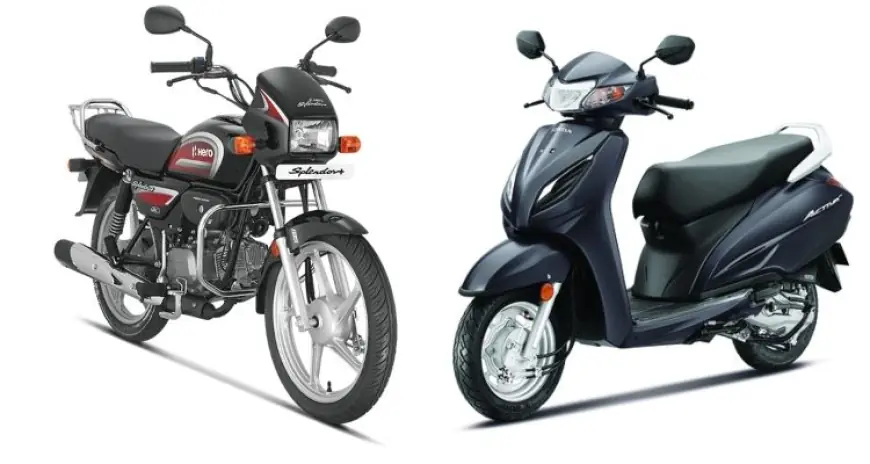Indonesia Two Wheeler Market 2030 Report: What to Know
Consumer preferences are also evolving, with a noticeable shift towards electric two-wheelers. This change is driven by environmental concerns and government incentives aimed at promoting sustainable transportation.

The Indonesia two-wheeler market is poised for transformative growth, driven by a confluence of economic expansion, urban mobility demands, technological innovation, and policy shifts toward sustainability. According to the latest research, the market was valued at USD 9.42 billion in 2024 and is projected to reach USD 11.6 billion by 2030, growing at a CAGR of 3.3% over the forecast period. As Indonesia’s cities continue to expand and diversify, motorcycles and scooters have emerged as pivotal tools for navigating urban complexity and enabling personal and commercial mobility.
Industry Key Highlights
- Market Size (2024): USD 9.42 billion
- Forecast (2030): USD 11.6 billion
- CAGR (2024–2030): 3.3%
- Key Growth Areas: Java, Sumatra, Kalimantan
- Dominant Segment: 0–150cc engine capacity
- Rising Demand: Automatic & Electric Two-Wheelers
- Notable Shift: Online vehicle sales and financing options
- Top Players: PT Astra Honda Motor, Yamaha, Suzuki, Kawasaki
Download Free Sample Report: https://www.techsciresearch.com/sample-report.aspx?cid=1744
Emerging Trends Shaping the Market
1. Surging Demand for Automatic Two-Wheelers
Younger consumers in Indonesia are increasingly leaning toward automatic and semi-automatic two-wheelers. The convenience of use, especially in congested city traffic, has made this segment extremely popular. Brands are actively responding by introducing models with CVT (Continuously Variable Transmission) systems that offer smoother rides, better fuel efficiency, and advanced infotainment features.
2. Online Retailing of Two-Wheelers
Digital transformation is sweeping through Indonesia’s two-wheeler retail sector. The proliferation of e-commerce platforms has enabled buyers to compare models, read reviews, and purchase vehicles online. This trend is reshaping traditional dealership models and empowering manufacturers to create direct-to-consumer channels.
3. Electrification and Green Mobility
While electric two-wheelers currently face infrastructure bottlenecks, including limited charging stations and higher costs, the market is slowly evolving. Government incentives, rising fuel prices, and environmental consciousness are pushing consumers toward sustainable alternatives. Innovations in battery technology and leasing models are expected to ease the transition.
4. Connected and Smart Vehicles
Modern two-wheelers now come equipped with features like GPS navigation, anti-theft tracking, Bluetooth connectivity, and digital dashboards. These upgrades are appealing to tech-savvy consumers and fleet operators alike, making smart mobility a new competitive differentiator in the industry.
Market Drivers Fueling Expansion
Urbanization and Congestion
Indonesia’s rapid urban growth has intensified traffic congestion in major cities like Jakarta, Surabaya, and Bandung. Two-wheelers offer a compact, fuel-efficient, and time-saving alternative to cars, making them indispensable for daily commuters.
Rising Disposable Income
As the Indonesian middle class expands, consumers have greater purchasing power to afford personal vehicles. Two-wheelers, being more affordable than cars, are the preferred entry-level mobility solution for millions.
Delivery and On-Demand Economy
The growth of e-commerce, food delivery services, and ride-hailing platforms has made two-wheelers an essential part of the gig economy. Companies like Gojek and Grab rely heavily on motorcycle fleets, creating sustained demand for new and replacement bikes.
Government Support for EVs
The Indonesian government is actively promoting electric vehicles as part of its green transition roadmap. Subsidies, tax breaks, and R&D support are being extended to both local and international EV manufacturers, paving the way for a gradual shift to electric two-wheelers.
Segmentation Analysis
By Engine Capacity
0–150cc
This segment dominates the market, catering primarily to daily commuters and first-time buyers. These models offer high fuel efficiency and are ideal for short urban commutes.
150–250cc
Popular among mid-range buyers seeking better engine performance and comfort for longer distances. These bikes are favored by intercity travelers and young professionals.
Above 250cc
A niche but growing segment, favored by enthusiasts, adventure riders, and the premium consumer base. These models boast superior design, performance, and features.
By Vehicle Type
- Scooter/Moped: Preferred for urban usage due to their lightweight, ease of use, and better storage capacity.
- Motorcycles: Widely used for both personal and commercial applications, especially in areas with rugged terrain or longer travel distances.
Regional Insights
Java – The Growth Engine
Java has emerged as the strongest and fastest-growing market for two-wheelers. With over 50% of the country's population, the island hosts a mix of dense cities and semi-urban regions. It has become a hub for both vehicle demand and manufacturing activity. The growth in logistics services and urban mobility requirements further fuels the demand in this region.
Sumatra & Kalimantan
These regions are witnessing rising adoption driven by infrastructure development and increasing urban sprawl. As connectivity improves, so does the requirement for affordable personal transportation solutions.
Competitive Landscape
Major Players in the Market
- PT Astra Honda Motor – Market leader with a wide range of models and a strong brand presence.
- PT Yamaha Indonesia Motor Manufacturing – Known for performance bikes and innovative design.
- PT Suzuki Indomobil Motor – Offers models that balance affordability and performance.
- PT Kawasaki Motor Indonesia – Focuses on niche high-performance bikes.
- PT Viar Motor Indonesia – Prominent in electric and cargo two-wheeler segment.
- PT Gesits Technologies Indo – Pioneering electric mobility in Indonesia.
- PT Triangle Motorindo (Viar) – Known for utility-focused two-wheelers.
- PT Indomobil Sukses Internasional Tbk – Strong distribution and financing support.
- PT Terra Motors Indonesia – Rising player in the electric mobility domain.
- PT Yadea Teknologi Indonesia – Backed by global EV experience, expanding local presence.
Strategic Initiatives
- Product diversification to cater to various engine capacities
- Expansion of dealership and service networks
- Investment in EV R&D and battery production
- Collaboration with ride-hailing and delivery platforms
- Introduction of financing solutions for low-income groups
Challenges in the Market
- Limited EV Infrastructure: Lack of widespread charging stations deters EV buyers.
- Price Sensitivity: High upfront cost of EVs and premium motorcycles remains a barrier.
- Import Dependency: Some high-performance components still rely on imports.
- Traffic Regulations: Tighter vehicle emission and safety regulations could impact smaller manufacturers.
Future Outlook
The future of the Indonesian two-wheeler market looks dynamic and promising. Key drivers such as rising incomes, digitalization, government policy support, and urban mobility needs are set to fuel consistent growth. Moreover, the gradual shift toward electric vehicles, supported by public-private partnerships, is expected to redefine the landscape over the next five years.
The market is likely to witness:
- Expansion in rural and Tier II cities
- Growth in electric two-wheeler models and hybrid options
- Technological upgrades with AI, IoT, and telematics integration
- Emergence of shared and subscription-based two-wheeler ownership
- Increased localization of production for cost competitiveness
10 Benefits of the Indonesia Two-Wheeler Market Research Report
- In-depth Market Forecasting: Provides clear projections till 2030, helping plan long-term strategies.
- Segmental Analysis: Breaks down market by vehicle type, engine capacity, and region.
- Competitive Intelligence: Offers insight into major players and their strategic movements.
- Emerging Trends Identification: Tracks new developments in technology and consumer behavior.
- Investment Insights: Aids investors in identifying high-potential segments and regions.
- EV Ecosystem Overview: Highlights challenges and opportunities in the growing electric segment.
- Policy & Regulation Review: Analyzes government initiatives and their market impact.
- Strategic Planning Support: Equips businesses with actionable data for growth.
- Consumer Behavior Insights: Reveals shifting preferences in engine type and features.
- Customized Solutions: Offers the possibility of tailored analysis for specific business needs.
Conclusion
The Indonesian two-wheeler market is not merely growing—it is transforming. It stands at the intersection of affordability, necessity, and aspiration. Whether it’s a delivery driver in Jakarta, a student in Yogyakarta, or a rural commuter in Sumatra, two-wheelers remain vital in enabling everyday life. With evolving technology, digital channels, and the rise of sustainable transport, this market is poised to become smarter, greener, and more inclusive.
By understanding regional nuances, consumer preferences, and policy directions, stakeholders—from manufacturers to investors—can capitalize on the immense opportunities that lie ahead in Indonesia’s thriving two-wheeler market.
Contact Us-
Mr. Ken Mathews
708 Third Avenue,
Manhattan, NY,
New York – 10017
Tel: +1-646-360-1656
Email: [email protected]
Website: www.techsciresearch.com
What's Your Reaction?
 Like
0
Like
0
 Dislike
0
Dislike
0
 Love
0
Love
0
 Funny
0
Funny
0
 Angry
0
Angry
0
 Sad
0
Sad
0
 Wow
0
Wow
0


















































